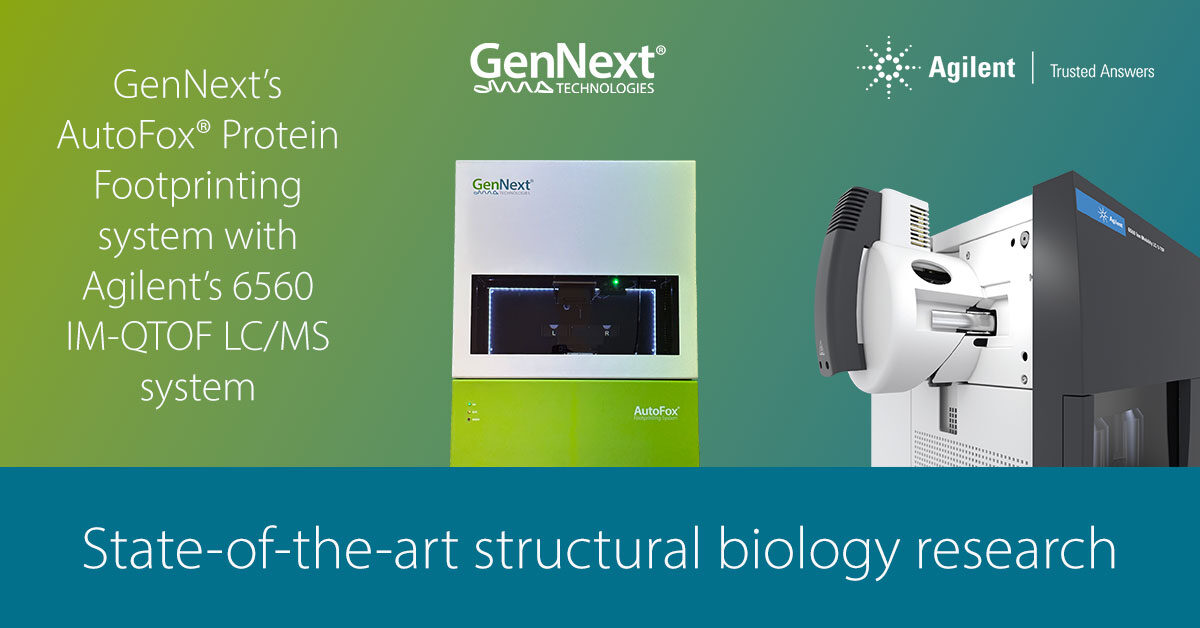GenNext and Agilent combine technologies to enhance structural biology analysis
A novel integration of protein footprinting and ion mobility mass spectrometry technologies promises to accelerate structural biology research in the biopharmaceutical sector, following a collaboration announced by GenNext Technologies and Agilent.
The partnership, unveiled at CASSS 2024, centres on the integration of GenNext’s AutoFox Protein Footprinting System with Agilent’s 6560 Ion Mobility Quadrupole Time-of-Flight (IM-QTOF) LC/MS system. This technological fusion creates a sophisticated workflow combining Hydroxyl Radical Protein Footprinting (HRPF) with high-resolution mass spectrometry detection and quantification.
The workflow encompasses three key stages: initial protein footprinting via the AutoFox System, followed by detection and quantification using the IM-QTOF System, and culminating in comprehensive data analysis through GenNext’s FoxWare and Agilent’s MassHunter IM-MS software platforms.
Breakthrough in structural resolution
A significant advancement offered by this integration addresses a longstanding challenge in protein footprinting: the complications arising from co-eluting peptidoforms leading to chimeric tandem mass spectrometry measurements. The incorporation of ion mobility-tandem mass spectrometry effectively resolves this limitation by deconvolving complex measurements, thereby achieving more precise amino acid-level structural resolution.
“We are thrilled about the possibilities the Agilent collaboration opens up for structural biology research,” said Scot Weinberger, CEO of GenNext Technologies. “The integration of our two powerful technologies offers researchers a state-of-the-art toolset for advancing their understanding of protein structures and interactions.”
Enhanced capabilities for therapeutic development
The combined platform offers particular benefits for biopharmaceutical researchers studying protein-ligand interactions, therapeutic-target interactions, and protein conformations in native environments. The enhanced structural insights facilitated by this technology are expected to contribute to more effective therapeutic design and potentially accelerate drug development pipelines.
Commenting on the collaboration, Jennifer Gushue, Associate Vice President of LC/MS Marketing at Agilent, said: “Agilent is committed to pushing the boundaries of scientific discovery. Our IM-QTOF system, combined with GenNext’s innovative protein footprinting technology, will provide researchers with the critical insights needed to drive the next generation of biopharmaceutical advancements.”
The capabilities of this integrated workflow will be demonstrated at the CASSS MS meeting, featuring a presentation by Dr Emily Chea of GenNext Technologies on “AutoFox Protein Footprinting System Provides Amino Acid Resolution for Protein HOS Studies.”





